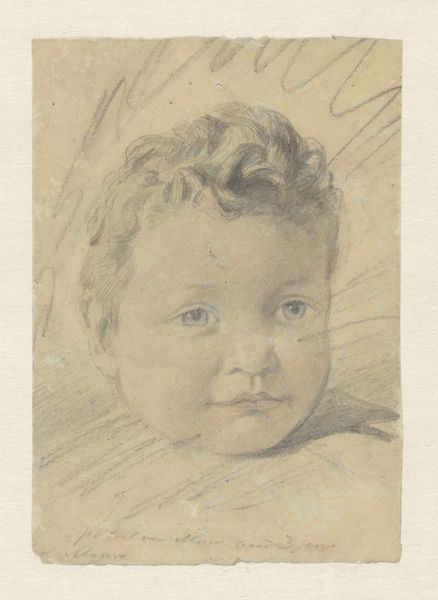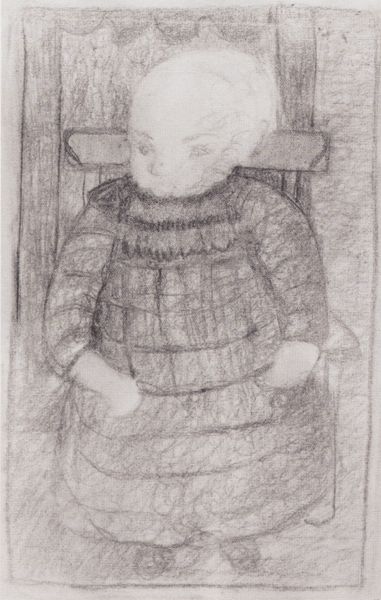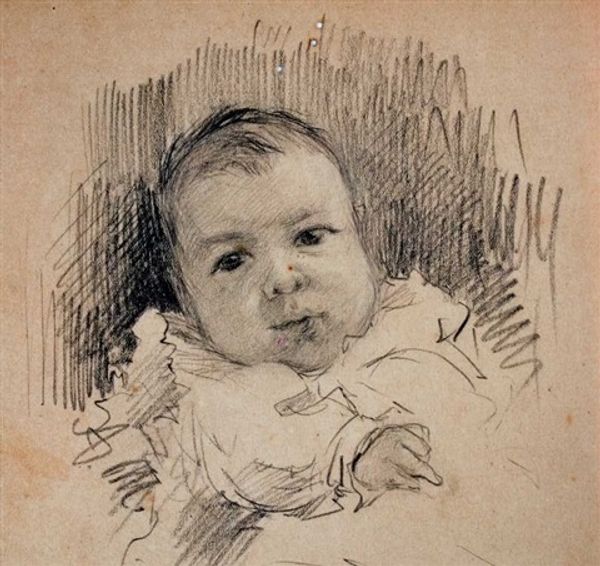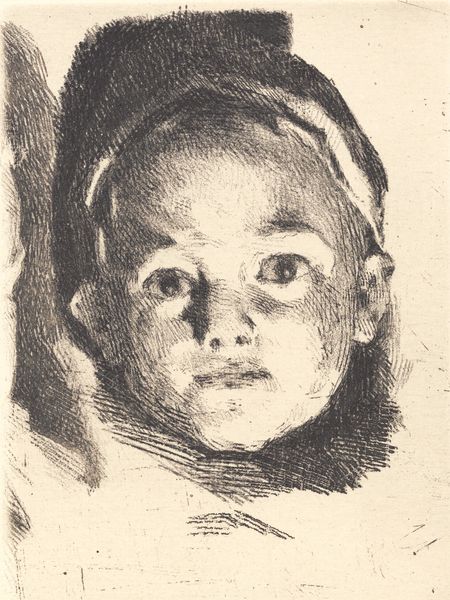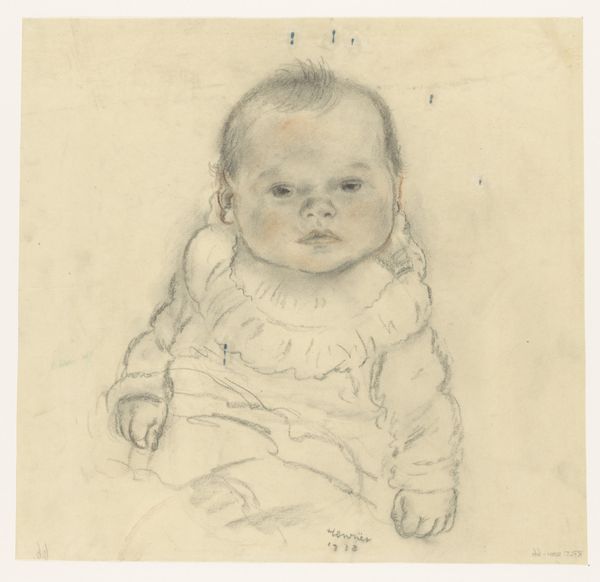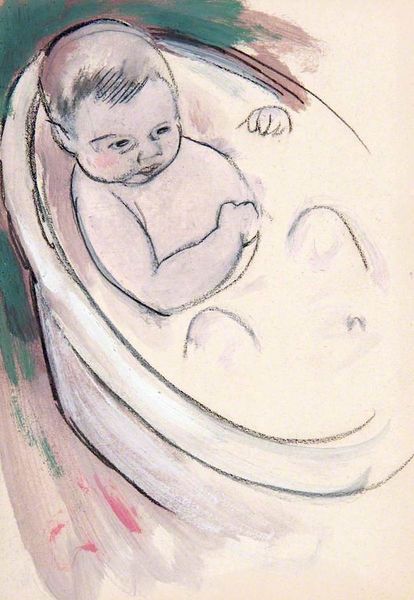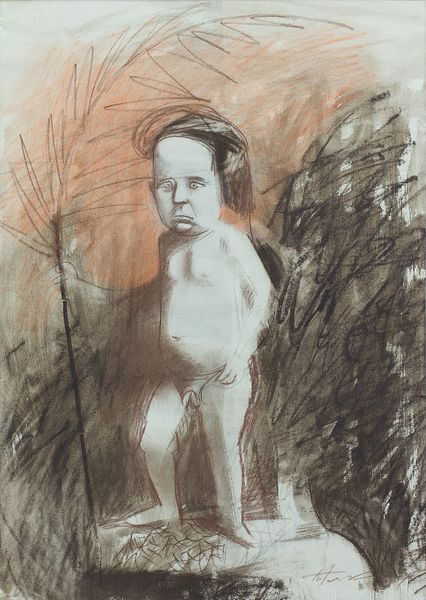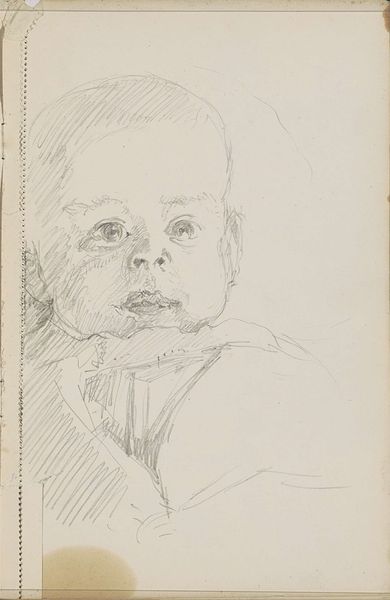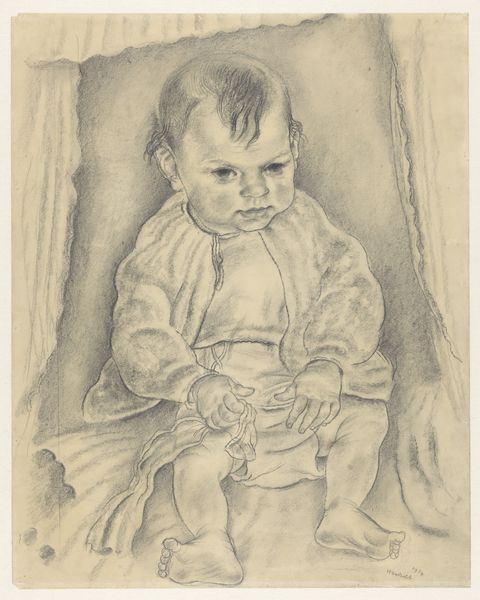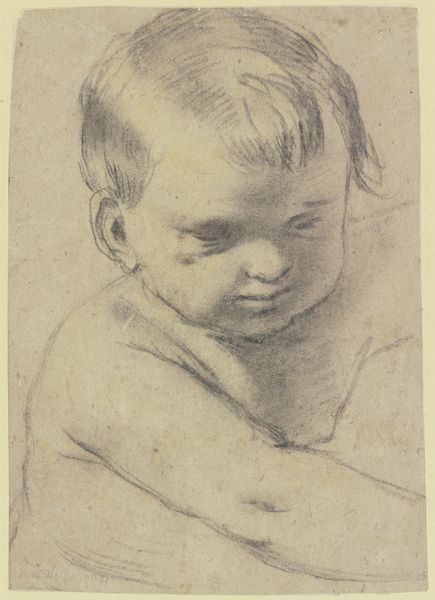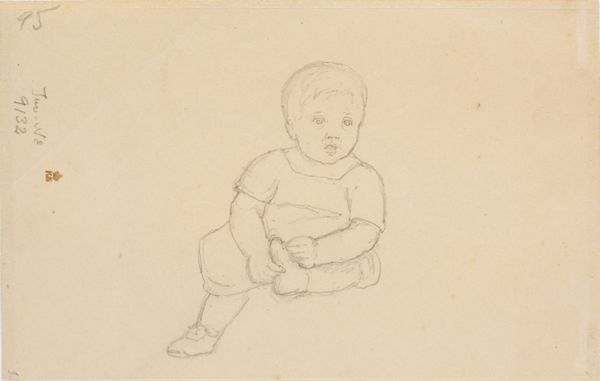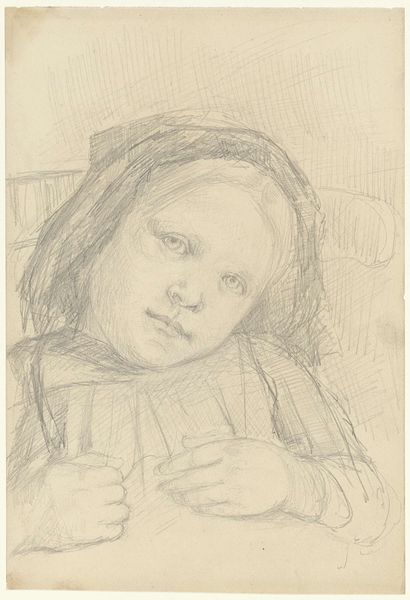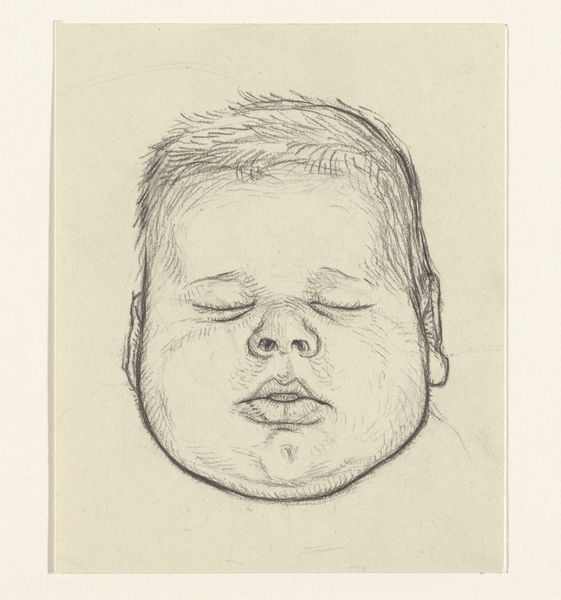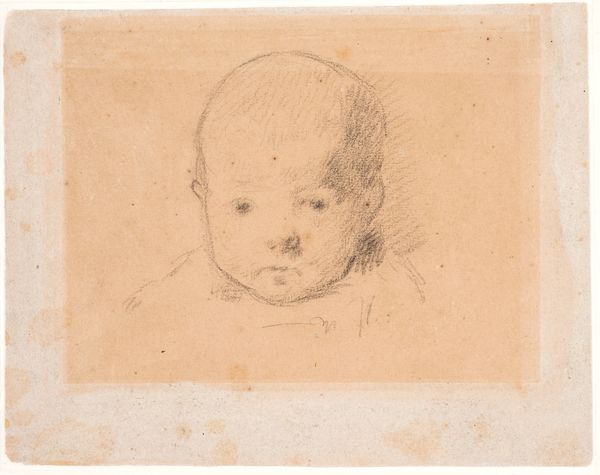
drawing, pencil
#
portrait
#
pencil drawn
#
drawing
#
pencil sketch
#
german-expressionism
#
child
#
pencil drawing
#
pencil
#
expressionism
#
portrait drawing
Dimensions: 28.5 x 28.5 cm
Copyright: Public domain
Editor: This is Paula Modersohn-Becker's "Infant in Seat" from 1902. It's a pencil drawing, and it strikes me as very intimate, almost vulnerable. What do you see in this piece, especially considering the materials she used? Curator: The choice of pencil is critical. Pencil, unlike paint, lends itself to the immediate and the ephemeral. Modersohn-Becker is capturing not just an image of infancy, but also the labor involved in observation, the very process of seeing. Note the visible sketch lines—the evidence of her hand and the contingency of the moment. Editor: So, it's less about the idealized image of a baby, and more about the act of drawing itself? Curator: Precisely. The texture of the paper, the grade of the pencil… all these material elements become foregrounded. Consider also the social context: women artists were often relegated to domestic subjects. Was she elevating this traditionally 'feminine' subject matter through her focus on process and material, staking her claim to artistic labor? Editor: That makes me see it differently. I was initially drawn to the softness of the image, but now I see the deliberate mark-making as a statement in itself. Is she also making a comment about accessibility and consumption through her choices? Curator: That’s insightful. Pencil, a relatively inexpensive and accessible medium, democratizes art-making. Unlike commissioned portraits in oil, this drawing emphasizes the artist's agency and control over the means of production, rather than catering to a wealthy patron’s demands. Editor: This has really made me think about how the choice of materials can carry so much weight. It’s about more than just the final image. Curator: Exactly. Looking at the process and materials encourages us to question traditional hierarchies and reassess the value we place on different forms of artistic labor.
Comments
No comments
Be the first to comment and join the conversation on the ultimate creative platform.
